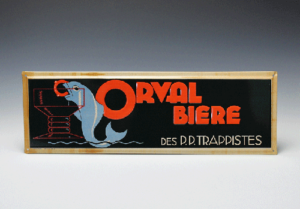Fashion & Justice
Benedict XVI and Feel Good Fashion
Catholic theologians and philosophers have built a substantial commentary upon papal encyclicals, sometimes probing the principles offered by the popes, and sometimes applying the principles to specific situations or domains. Though often controversial, CST has only one goal: to offer people and governments reasons for how best to think about human development. It is rather odd, therefore, that to date there exists no CST texts on the fashion industry.
Odd because CST concerns justice, and wondering about justice without considering clothing is impossible. Justice touches upon identity and communication, but clothes mediate these: justice connects to our embodiment, but we think about the bodies of persons primarily as clothed bodies,[1] bodies gesturing in ways inseparable from the way hands and faces are adorned or modified. And then there is the very practical point that a concern for justice, if it ignores how our clothes are made, how our adornment is made possible — whether cars, houses, what we eat and drink, and the myriad other ways we communicate status or belonging — must necessarily be incomplete. There is little with which justice concerns itself that is not tied up with clothing and fashion. CST is incomplete, therefore, but much the same can be said of secular ideas of justice, for few books on the topic of fashion and justice exist.[2]
2
“Feel Good Fashion” is a movement where designers consciously make justice integral to the clothes they sell. Kanye West has a glorious music video to accompany his song, “Diamonds of Sierra Leone.” The song begins sampling the famous “Diamonds Are Forever” theme tune to the Bond film of that name but quickly moves its focus to the origins of diamonds. That is, it switches quickly from the allure of diamonds to the brutal conditions under which they are sometimes mined. There is much that can be said about West’s song and video but it ends with a request that consumers ask questions about the provenance of the diamonds they are considering for purchase.
3
The diamond industry is famously secretive and despite the industry’s recent efforts at transparency consumers will struggle to learn about the origins of specific diamonds they might purchase.[3] The building collapse of the Rana Plaza garment factory in Bangladesh in 2013 with over 1100 dead brought to prominence a similar phenomenon in the clothing industry.
4
H&M is a Swedish, family-run business that sits atop the Fast Fashion model of clothing retail: the selling of trendy, inexpensive clothes made in a very short period of time. The Managing Director and heir to H&M, Karl-Johan Persson, recently received an award for his efforts at building justice into the manufacturing process.[4] Notably, H&M’s efforts to boost wages at the three factories they rely on in Cambodia. As the article notes, however, the company also uses multiple other factories where they have little direct control, including Bangladesh. As will become clear in Chapter 7, the problem here is understated. Under intense pressures to produce trendy clothing, companies rely on middlemen to rapidly farm out work over literally thousands of factories throughout Asia. As a consequence, Fast Fashion companies have no idea where in fact their clothes are being made nor in what conditions. Found amongst the dead and rubble of the Rana Plaza were clothes of “Fast Fashion” retailers like Mango, Primark, Benetton, and KiK, to name only a few.[5] Many companies claimed they had no idea their clothes were being made there.[6] In Chapter 7 I discuss the ethics of this case at length but the basics of how so many came to die in the factory are all too common: government corruption, owners on the make, over crowding, abusive managers, subcontracting, and unrealistic deadlines.[7] “Feel Good Fashion” is an effort to purify the manufacturing process.
5
Companies aspiring to “Feel Good Fashion” document on their websites the stages of production, who made the item, in what conditions, and some companies, like the Belgian fashion house Honest By, even document not merely the origins of the cloth but the thread used to piece together the various cuts.[8]
Scepticism often greets such efforts. Who hasn’t had the bizarre experience of being at a restaurant that trumpets its food as “locally sourced” only to be told, when offered mango in winter in a restaurant on the U.S. East Coast, that though the fruit came from many thousands of miles away the supplier is local! Scepticism is not always warranted, however. I want to show that “Feel Good Fashion” matches the theory of justice found in Chapter 3 of Pope Benedict XVI’s 2008 Charity in Truth. Though my favoured model for ethical business practice is Scheler’s estate (see Chapter 5), Benedict’s model is a deft blending of moral rigour and business flexibility. Independently of Catholicism, this theory of justice stands on its own merits and fashion houses will find it a workable framework for business, as I will show through various examples.
6
The fundamentals belong to the long heritage of Aristotelian scholasticism though Benedict’s explanation is quite fresh. A business plan is just which combines two principles, commutative justice and distributive justice (CV, para. 35). The former is a way to think about contracts and for their validity there must be an exchange of equal value. Contracts are potent as they calibrate our desires. However, contracts in isolation from distributive justice are bound to fail. Benedict describes distributive justice as social trust or social cohesion (cf. LS, para. 46).
7
Consider going to Target to buy a bike. You have a hundred dollars and you hand it over for a bike. You expect the bike to work and be basically efficient as a bike. You do not expect the tires immediately to deflate or the seat to be oddly bendy. It is actually vital to Target’s business plan that no such things happen. They make money the more swiftly they match customers’ desires. This is a case of commutative justice: for a hundred dollars spent you get a basic but serviceable bike.
8
Not following the unwritten rules of having an argument.
Consider now a bizarre thing that happens every time you go to Target. You just cannot get a parking spot. The reason? Each time you see a shopper coming out you stop and gesture you’d love his spot. The shopper sees you. He then puts his bags in his car but instead of driving away, he takes out a cigarette, leans against his car, and slowly and lovingly puffs away looking right at you. There is nothing you can do. There is no law to which you can turn. You cannot lean out of the car to remind him that there is a contract where he must exchange an equal value with you. It is not like the case of buying the bike at Target, no relationship of commutative justice has been entered into, or could be. Indeed, Target’s business plan relies on something for which they never pay: they build their business on an assumption that people in the carpark will be decent folk and facilitate one another’s lives.[9] Target makes money because there is a justice they never ever pay for: distributive justice. Benedict also calls this gratuity.[10] Should this gratuity fail then Target cannot do business. Sales would fall because of a collapse of social cohesion or, put differently, the isolation of one customer from another (cf. LS, para. 75). Economic poverty stands and falls with social poverty. This is why Benedict defines poverty as isolation.
9
“Feel Good Fashion” aims at transparency to meet the demands of distributive justice. The fashion label Everlane visits its suppliers and makes video shorts for its website so consumers can see how their purchases contribute to suppliers’ local communities. The company prides itself on high levels of cooperation with suppliers, even if some are at great distances. Everlane also details the pricing structure for each stage of the manufacturing process. Whereas the mark up on some fashions can be as much as 800% that of Everlane is only 220%. This is an appeal to commutative justice. Cynicism here is certainly not warranted because these efforts contrast markedly with other practices in the clothing business.
10
BOF has an interesting report on a phenomenon in fashion retail. Russian buyers pretending to be merchandizers from regional Russian cities visit European fashion capitals and make significant buys. They return to Russia, not to the provinces, but Russia’s major cities, and there undersell the boutiques that do have formal relations with fashion houses, and higher costs generally. The plan is easy to pull off. The fashion houses have no knowledge of provincial Russia or how to verify the bona fides of the merchandizers, an apartment is easily rented for a few days in a tony part of Moscow or Saint Petersburg, and social media does the rest.[11] Here, no effort to build a relationship of any kind is made: neither social trust nor integrity of contract.[12]
11
These two principles of justice link to the two classical moral norms of CST: solidarity and subsidiarity. Solidarity is a commitment to community, a sort of standing shoulder to shoulder with those in need. Subsidiarity is derived from the Latin subsidium, a Roman military word, meaning the reserve units that would step in should the forward line show signs of opening up. Subsidiarity is linked to supporting solidarity, therefore, but a little more precisely, it is directed at competency, ensuring persons can play their role in the community. It is about emancipation, a freedom to play a role. “Feel Good Fashion” brands host videos on their websites to show both that suppliers are fairly treated (solidarity) and workers showcasing their competency (subsidarity).
12
A similar phenomenon is found in the beer industry. As with the food industry, beer has seen an enormous switch to small batch, craft production, with an emphasis on taste and place. The great beneficiaries of this switch in fashion away from industrial production of bland beer are the Belgians. Small breweries are found throughout Belgium and their greatest beers are centered about monasteries. Wanting to link to this switch in fashion is Sebastien Morvan. His business model is to design, but not produce, unique flavoured beers and to design multiple new beers a year. Having made the recipe he seeks out other brewers to actually make the beer for him.


13
This is a case of “Fast Fashion” trendy beer and not “Feel Good Fashion.” As other beer manufactures have pointed out, the business plan aims to take advantage of the spreading fashion for distinctive tasting beer but also wants to trade on the desire beer drinkers have for a connection with a place and heritage, an experience so distinctive of Belgian beers. The fact that the beers are dreamt up on a computer and made wherever capacity for production happens to be available is consciously elided by Morvan. Bottle designs evoke Belgium’s historic cities when, in fact, the beer hails from other places. Some beer manufacturers are requesting legislation to compel companies to honestly state the place where the beer is made. Of course, this is not a case that includes significant violations of human dignity but it is an unjust business model: there is no commutative justice — buyers are not purchasing the full experience they exchange their money for — and there is no distributive justice, since no effort is made to build social cohesion by building a brewery in a specific location and commit to a social identity there. Intriguingly, given the theological background to Benedict’s theory of justice, Morvan explicitly states that he is inspired by Ayn Rand’s radical individualism: as he puts it, “we’re the antithesis of the old theory that there’s a relationship between God and what’s in the beer glass.”[13] It might not be strictly true that without God there is no justice but in this case it is true.[14]
13
Probably the most powerful change in food fashion in decades is the “farm to table” phenomenon. Post-war, at least in America and England, a bizarre thing happened: perhaps inspired by jet and space travel or the sense that engineering and industrial muscle had turned the tide of war, huge populations ran towards synthetic, industrial foods. For example, the British and Americans — though not all European countries — started to eat bread that really stretched the definition of the word. Now, throughout Britain, America, and Canada, a drive towards small production foods, beer, and Scotch, is on-going at a dramatic clip. The idea that craft foods are nutrionally, environmentally, and morally healthier is transforming fashion, taste, and design. An interesting phenomenon has had to accompany this: the passing of cottage industry laws.

14
Home bread bakers in the U.S. who started to sell their craft found themselves shut down by government agencies. Mass industrial bread production can easily meet government regulations of health and safety – at least as these ideas were conceived by government. Europeans visiting American supermarkets are often struck by the sterile environment: so much already packed and no food smells. Administrative laws generate this environment and also make it impossible for small businesses to sell their craft. Home bakers have had to work hard to have health and safety regulations changed to permit the sale of their craft. In America, about 30 of the fifty states have changed their laws to permit the flourishing of the cottage food industry.[15] It is morally required that all states do so. Why? Laws prohibiting cottage industry transgress all four principles so far discussed. Craft bakers are competent (subsidiarity), they seek to provide food to their community (solidarity), to deliver high quality food at a robust but fair price (commutative justice), and sell to a local community at low environmental cost (distributive justice). Government is under an obligation to provide health and safety inspections that take the time to visit these individuals in their homes where they are doing moral work.

15
It is the same with “Feel Good Fashion.” Fashion houses need to ensure that they work on honest terms with suppliers (commutative justice), in a way that fosters trust (distributive justice), social cohesion (solidarity), and with an aim to emancipate the workers and the places they live (subsidiarity). “Feel Good Fashion” does not always accomplish its moral goals.
16

Aveda, a company that led the way in the return to natural beauty products, is a good example of moral failure despite good intentions.[16] Wanting natural ingredients for their make-up and skin products, and also wanting to be a leader in “Feel Good Fashion,” Aveda developed a business plan built around the urukum plant found in the Brazilian Rain Forest and gathered by the Yawanawá, a tribe living in Neolithic conditions. Various ills plagued the tribe and Aveda’s plan was to sell products that celebrate the tribe, place, and simple origins of urukum. Spas would feature pictures and sounds from the Rain Forest and sellers would be trained in the telling of the story of the Yawanawá and Aveda’s relationship with them. The moral basis of the plan was to build solidarity by fronting the tribe money in the form of a hospital, school, farming tools, etc. In part, this worked. The tribe has doubled in size, its language and customs thrive, members have stopped migrating to cities. Social cohesion (distributive justice) flowed (initially) from this act of solidarity. Contracts were agreed whereby for the financial assistance to shore up the community, the Yawanawá would deliver sizable crops to Aveda (commutative justice). The goal was subsidiarity, to stabilize and emancipate the Yawanawá by economic, educational, and cultural sufficiency.
17
The relationship has lasted 25 years but moral problems have surfaced. Seldom in those years have the Yawanawá delivered a crop (breaking commutative justice). Indeed, a recent company report found the fields in disrepair and the community fractured with nearly one half believing the relationship with Aveda was counter productive (failing distributive justice). Solidarity damaged, the question arises whether Aveda is simply keeping the Yawanawá on welfare because their business plan — which is highly profitable — requires the relationship go on no matter the cost to the tribe’s integrity. As a company representative put it, eliding the morality of the plan, the relationship always had for a goal: “Sharing the Yawanawá story.”
18

In the absence of commutative and distributive justice, and with the loss of solidarity, one would also expect the loss of subsidiarity. This helps adjudicate two possible interpretations. One half of the tribe has severed the relationship with Aveda and even formed a new village. They have moved into making Rain Forest inspired furniture. It is likely that Aveda’s relationship has actually helped foster this subsidiarity but, of course, against their own intentions. It seems the other half of the tribe have no subsidiarity and are living on welfare from Aveda. With these details alone, it is a fair conclusion, I believe, that Aveda is retaining an immoral business practice. However, they have also broken commutative justice with their spa customers. Believing they are buying skin care with a link to the natural Rain Forest, customers are in fact duped: because natural urukum is not forthcoming from the tribe, Aveda uses industrial manufacture and the product replicating the urukum is the same orange colouring agent used in Kraft brand Mac & Cheese.
19
One of the industry leaders in “Feel Good Fashion” is Zady, a web based retailer that aims to sell and trade with suppliers in a transparent and fair manner. They recently set themselves the goal of making a quality wool sweater made in the USA that would sell for a price comparable to a J. Crew sweater (a “Fast Fashion” retailer in America found in all shopping centers). The result of their effort is interesting and includes problems.[17] It is shocking to think that under 3% of all the clothing sold in the U.S. is made in the U.S. and though it does not follow that the great majority of U.S. clothing is made in sweatshop conditions it does follow that little of the American fashion industry is contributing to distributive justice.[18]
20
Zady’s initial problem was to locate an American sheep farm able to supply the wool. The place they settled on was a 143-year-old sheep farm in Oregon. They met with resistance. The owner cited geographical distance and the fact that New York types do not understand farming as reasons for not doing business. The owner doubted there would be solidarity or distributive justice, in other words. Though terms were agreed, Zady could never overcome the problem of distance and found it intensifying. Once working with the farm in Oregon they found that manufacturing the sweater entailed the wool travelling to South Carolina, two different places in Pennsylvania, back to the West Coast, and finally to distribution points in New York. The difficulty was always the same: a paucity of businesses in the U.S. with the savoir-faire to actually transform wool into a garment. The environmental costs connected with Zady’s project are likely less than the costs involved in logistics across oceans but it offers a glimpse into how severely most clothing companies are failing to meet distributive justice. Zady might usefully try to model the companies I now describe in the next chapter but that would require a very different presence in space and time.
21
FOOTNOTES
[1] L. Svendsen, Fashion: A Philosophy (Reaktion Books, 2009).
[2] A summary of those few books is found nicely pulled together in a Lars Svendsen’s good book.
[3] I discuss the morality of “blood diamonds” at length in the first chapter of KA.
[4] “Can Cheap Clothing Generate Fair Wages? H&M Believes It Can” (Washington Post: Robin Givhan).
[5] “Bangladesh Disaster: Can US Brands Repair Their Reputations?” (Kay Johnson: The Christian Science Monitor, May 6, 2013).
[6] “Why Retailers Don’t Know Who Sews Their Clothing,” (Tripti Lahiri & Christina Passariello).
[7] 42 people were indicted for culpable homicide, including the building owners, the major of the city, and numerous other government officials (“Bangladeshi Police Charge 42 in Collapse of Factory Complex” WSJ, June 2, 2015).
[8] “Feel-Good Fashion” (Laura Neilson & Meenal Mistry).
[9] There is experimental evidence that this kind of community is central to human happiness: “The Sandra Bullock Trade,” (David Brooks: NYT, March 29, 2010).
[10] For some interesting examples of gratuity and Italian business, see “Luxottica’s Owner Celebrates His Birthday with a $10 Million Gift – to His Employees,” Quartz, May 20, 2015.
[11] “Inside Russia’s Clandestine Showrooms” (BOF: Jana Reynolds).
[12] Some fashion houses are complicit. Eager to move stock, some are willing to sell even when they suspect the merchandizers are deceitful. Obviously, such houses fail in commutative and distributive justice, as they break contract with the boutiques and mangle trust.
[13] “A Brouhaha Erupts in Belgium Over New-Age Beer Designs” (Frances Robinson).
[14] I would like to know more about the business of Nasty Gal, the hugely impressive achievement of Sophia Amoruso. A retail business built in seven years into a $240 million company, originally from selling vintage finds at high marks ups. The curiosity is that Amoruso was an anarchist. Now she declares herself a capitalist but as Sorel points out the two are not incompatible (see his discussion of Scotsman, Carniege, in Reflections on Violence [Cambridge, 2004], pp. 232-33). Benedict’s theory of justice, as with Scheler’s estate, has continuities with anarchism but Nasty Gal’s business model seems not to have any. For an interesting account of Amoruso and her business, see “The Business of Being Nasty Gal,” WSJ Magazine, September 2013, pp. 96-98.
[15] “Local Uprising” (Katy McLaughlin).
[16] “Skin-Deep Gains for Amazon Tribe” (John Lyons).
[17] “Made in the USA: A Sweater Travels from Sheep to Shelf” (Christina Binkley).
[18] “What ‘Made in America’ Looks Like Today” (Courtney Iseman, i-D, October 28, 2015).